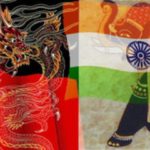Obstetrics and gynecology, woman’s reproductive health, in Chinese medicine is a vast and complex subject with a history that can be traced back some 3000 years.
It is a science that continues to evolve to fit into the paradigm of western culture. Historically Chinese medicine and Western medicine existed on opposite sides of the spectrum, Chinese medicine with a more macroscopic view of the body, and western with a more microscopic observation of disease.
In terms of women’s reproductive health, Chinese medicine considers certain organs and their functions of utmost importance. Such as the Spleen (pancreas) for creating blood, the Liver for circulating Qi and blood, the Kidneys for storing essence (vitality and longevity), and the Heart for regulating the mind. There are also a few extra meridians that are not associated with an organ, that are specific for reproductive health, such as the Chong (penetrating) vessel, the Ren (directing) vessel, and the Dai (girdle) meridian.
Hormones can be translated into yin (cooling) and yang (heating), with imbalances causing abnormal body temperature sensations, such as night sweats and hot flashes. When observing a woman’s basal body temperature, in order to gage a woman’s fertility and hormonal cycle, the follicular phase is representative as the yin phase (cooling/estrogen) and the luteal phase as the yang (warming/progesterone).
Presently modern Chinese Medicine (CM) is becoming more microscopic, incorporating some of western medicine’s diagnostic tools, and Western medicine is gradually shifting towards a more holistic and macroscopic view of the person in order to fill in the missing pieces. This trend is leading to a new and exciting era in how medicine is practiced.
Many successful practitioners of CM will take note of the attributing Western medicine diagnosis (such as fibroids, PCOS or infertility), but will then further diagnose the imbalance using CM differentiation. It becomes clear rather quickly that there is no reasonable translation from the east to the west. Chinese medicine has a language all its own.
So, how does Chinese medicine diagnose woman’s reproductive health? It is a poetic dance of yin/yang, 5 phases and 5 elements, 8 principles, 10 organs, and 12 meridians. The diagnostic tools are observation of the tongue, palpation of the pulses and points, and observations of characteristics and symptoms. The underlying beauty of this method is that as long as the practitioner can observe the patient, one is never without a diagnosis…even if all western lab results are inconclusive.
There have been copious clinical studies on the efficacy of Chinese medicine. Most studies focused on just acupuncture, but some incorporated herbal remedies. Personally, I feel that the validity of Chinese medicine and how it positively affects women’s reproductive health should not be dependent on modern clinical studies. If not only because there is no precise translation from one medical standard to the other. We are just now beginning to understand what Taoist practitioners figured out back in time immeasurable.
To appease the western mind, research has concluded that CM is effective for:
- Pain, including Dysmenorrhea (painful menses)
- Amenorrhea (both primary and sencondary)
- Asherman’s Syndrome
- Endometriosis and Adenomyosis
- Menorrhagia (excessive menstrual bleeding)
- Polycystic Ovarian Syndrome (PCOS)
- Non-Anovulatory Menstrual Disorders
- Infertility, Luteal Phase Deficiency (LPD)
- Polymenorrhea (bleeding between periods)
- Stalled labor/ Labor Induction
- Breech Presentation (turning the baby head down for labor)
- Threatened or Recurrent Spontaneous Abortions (RSA)
- Morning sickness and Hyperemesis Gravidarum
- Hypertension in Pregnancy
- Hepatic Cholestasis of Pregnancy
- Premenstrual Syndrome (PMS)
- Periodic Menstrual Migraines
- Postpartum Depression and Anxiety
- Postpartum Heat Stroke
- Puerperal and Postoperative Urinary Retention
- Urinary Incontinence
- Uterine Myoma
- Uterine Prolapse
- Fibrocystic Breast Disease
- Insufficient Lactation
- Acute Mastitis
- Perimenopause and Menopausal discomforts (ie insomnia, hot flashes, night sweats)
- Postmenopausal Syndrome and Osteoporosis
As an Oriental medicine practitioner living in the west, there is social understanding and clear benefit to simply treating the woman according to the western diagnosis. However, the Chinese medicine model of looking at the greater picture and treating the whole person with their complex layers of imbalances, not only can resolve the health issue at hand but also the underlying cause. This perspective of seeing the forest through the trees, can give the gift of health at the deepest level of both our mind and body.


 Read Previous Post
Read Previous Post
